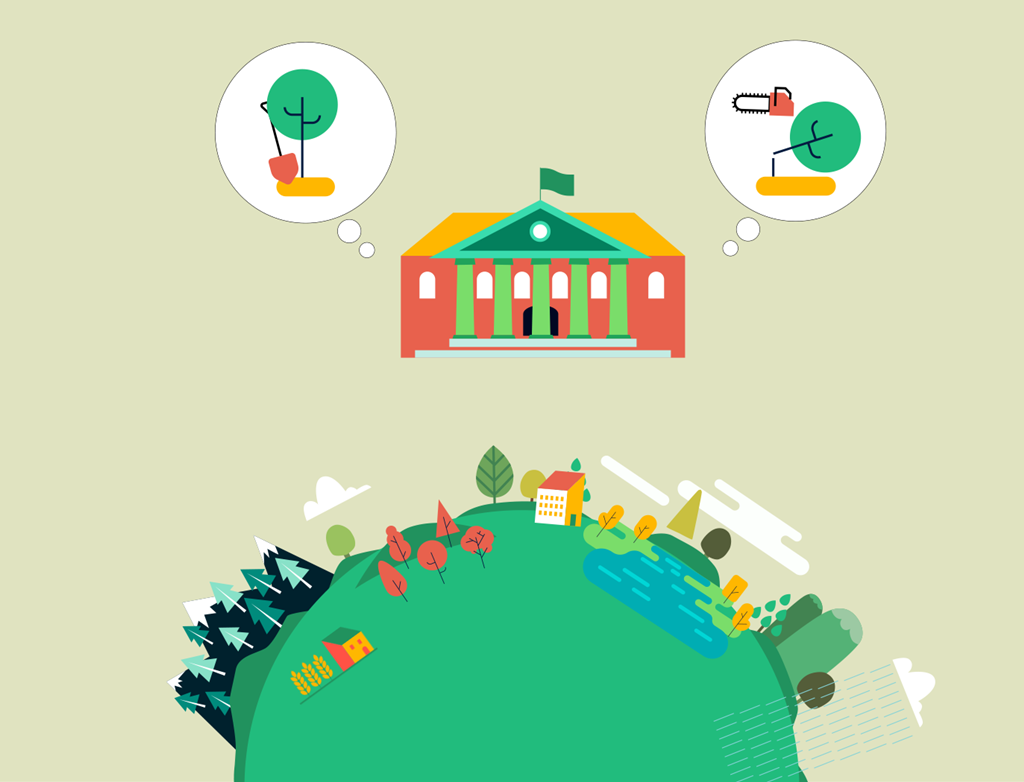Sub-national governments claim at COP28 key role in tackling the environmental crisis
Subnational governments and regional partners of Regions4 - including CREAF - have released in COP28 a document and a video with a set of actions to help solve the global climate and biodiversity crisis. The report is called 'Transformative Multi-Level Action: Subnational Solutions for Climate & Biodiversity’ and is addressed to political decision-makers around the world. With this proposal, Regions4 shows that the experience, knowledge and nature of subnational governments is a good laboratory for territorial innovation to apply solutions to the global crisis that can then be replicated at the international level.
The proposal is specified in 4 main areas of action: 1. proposing inclusive and multi-scale landscape and ecosystem solutions, 2. boosting regional governance, 3. accelerating the economic flow to local bodies, and 4. joining efforts between subnational and international administrations.
Science is clear about the transformations needed to keep the planetary boundaries, and ambitious international targets for biodiversity, climate and sustainability have been set until 2030 and 2050. But the arrangements put in place so far do not guarantee results.
The policy brief makes clear that "the scientific community is clear on the transformations needed to keep planetary boundaries within a safe operating space for humanity, while ambitious international biodiversity, climate and sustainability targets have been set up to 2030 and 2050". However, the urgency that Regions4 raises in the document lies in its conviction that "agreements and commitments made so far do not guarantee results".
The intention of the international association of subnational and regional governments is to collaborate and take action to meet the ambitious international targets of theParis Agreement, of the Kunming-Montreal Global Biodiversity Framework, the COP15 on biodiversityt, the United Nations Framework Convention on Climate Change, de la Convention on Biological Diversity and the SDGs of the 2030 Agenda, to cite the essential ones.
4 proposals against the double global biodiversity and climate crisis
1/ Inclusive, multi-scale solutions for landscapes and ecosystems.
Sub-national governments work closely with local realities and propose, on the one hand, ecosystem-friendly solutions to climate change and, on the other hand, free and open consultation with local communities. Among the best alternatives are biosphere reserves and biological corridors, useful for integrating global goals into local geographies.

2/ Boosting regional governance.
It is necessary to strengthen the effectiveness, quality and good orientation of regional and subnational governments, to reconcile the environmental and development objectives that respond to climate and biodiversity emergencies. This is a first step towards meeting the goals of the United Nations Framework Convention on Climate Change (UNFCCC), the Convention on Biological Diversity and the Sustainable Development Goals. Regions4 notes that the IPCC and IPBES have already made it clear that international, national and sub-national action needs to be coordinated and coherent.

3/ Accelerate the flow of funds to local authorities.
Between 2003 and 2016, less than 10% of climate finance from global climate funds went to local action. Sub-national governments have limited capacity to raise revenue through taxes and fees and rely heavily on central government transfers and other grants, which account on average for more than half (51.5%) of their revenues. Although the commitments and mandate are in place for sub-national governments, the financial resources to implement them are still slow to arrive. Commitments such as the Edinburgh Process (2020), COP15, United Nations Development Programme UNDP's BIOFIN Programme stand out.
4/ Unite efforts at subnational and global levels.
According to UNDP estimates, more than 70% of all climate change mitigation measures and 90% of adaptation measures needed to meet the Paris Agreement must be taken subnationally Science is clear on the actions to be taken, but there is a need to disseminate scientific knowledge, promote integrated solutions and accelerate the flow of financial resources. Aligning international climate and biodiversity agendas is one of the strongest ways forward, and can help overcome the planetary crises we face.








